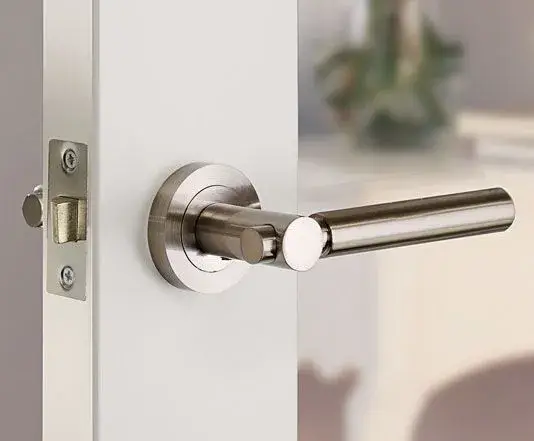Choosing a mattress that does not sink is crucial for ensuring a good night’s sleep and maintaining proper spinal alignment. This article will explore different types of mattresses known for their durability and resistance to sinking, along with factors to consider when selecting a mattress that meets your needs.
Understanding Mattress Sinking

What Causes Mattresses to Sink?
Mattress sinking occurs when the materials within the mattress begin to wear down, losing their ability to provide adequate support. Several factors contribute to this issue:
- Material Quality: Low-quality materials break down faster, leading to sagging.
- Weight Distribution: Heavier individuals or couples can cause mattresses to sink more quickly.
- Usage: Frequent use and lack of proper rotation can accelerate wear and tear.
Impact of a Sinking Mattress
A sinking mattress can lead to several problems, including:
- Poor Sleep Quality: Lack of support can cause discomfort, leading to restless sleep.
- Back and Joint Pain: Improper spinal alignment can result in back, neck, and joint pain.
- Reduced Mattress Lifespan: A sinking mattress often needs to be replaced sooner than one that maintains its shape and support.
Types of Mattresses Resistant to Sinking
Memory Foam Mattresses
High-Density Memory Foam: Memory foam mattresses are popular for their contouring properties, but they can vary in quality. High-density memory foam tends to resist sinking better than low-density foam. These mattresses offer excellent support and longevity.
- Advantages: Excellent pressure relief, good motion isolation.
- Considerations: Ensure the foam is high-density for better durability.
Gel-Infused Memory Foam: Some memory foam mattresses are infused with gel to enhance support and cooling. These mattresses can provide better resistance to sinking due to the added structure.
- Advantages: Cooler sleeping surface, additional support.
- Considerations: Gel-infused models can be more expensive.
Latex Mattresses
Natural Latex: Natural latex mattresses are known for their durability and resistance to sagging. They provide a firm, supportive feel and are often more resilient than synthetic options.
- Advantages: Long-lasting, hypoallergenic, eco-friendly.
- Considerations: Can be more expensive than other types of mattresses.
Synthetic Latex: While not as durable as natural latex, high-quality synthetic latex can still offer good resistance to sinking and provide a supportive sleep surface.
- Advantages: More affordable than natural latex, good support.
- Considerations: May not last as long as natural latex.
Innerspring Mattresses
Hybrid Innerspring: Modern innerspring mattresses, often called hybrid mattresses, combine coils with layers of foam or latex to enhance support and comfort. The coil system helps prevent sagging by providing robust structural support.
- Advantages: Good support, durability, better airflow.
- Considerations: Can be heavier and harder to move.
Pocketed Coils: Mattresses with individually wrapped coils offer targeted support and minimize sagging over time. Each coil moves independently, reducing the risk of sinking in high-pressure areas.
- Advantages: Excellent motion isolation, good support.
- Considerations: Higher cost compared to traditional innerspring mattresses.
Airbeds
Adjustable Airbeds: Airbeds with adjustable firmness settings allow users to customize the support level. These mattresses can be a good option for those who want to prevent sagging, as the air chambers can be adjusted to maintain firmness.
- Advantages: Customizable support, good durability.
- Considerations: Expensive, requires maintenance to ensure air chambers remain functional.
Factors to Consider When Choosing a Mattress
Mattress Firmness
Choosing the right firmness level is essential for preventing sinking. A mattress that is too soft may lack the necessary support, while one that is too firm can be uncomfortable.
- Firm: Provides strong support, suitable for back sleepers.
- Medium-Firm: Offers a balance of support and comfort, ideal for side sleepers.
- Soft: More cushioning, best for those who prefer a plush feel but may not be ideal for preventing sinking.
Mattress Thickness
Thicker mattresses tend to offer better support and durability. A mattress with multiple layers, including a supportive core, is less likely to sink over time.
- 10-12 Inches: Standard thickness offering good support and durability.
- 12+ Inches: Often includes additional layers for enhanced comfort and support, ideal for heavier individuals or those seeking luxury.
Edge Support
Good edge support prevents the mattress from sinking at the sides, which is particularly important for those who sit or sleep near the edge of the bed.
- Reinforced Edges: Some mattresses come with reinforced edges to enhance durability and support.
- Foam Encasing: High-quality foam encasing around the edges can provide better edge support.
Mattress Foundation
The foundation or bed frame used with the mattress can significantly impact its longevity and resistance to sinking. A sturdy, supportive foundation helps maintain the mattress’s shape and support.
- Box Spring: Traditional option offering good support.
- Platform Bed: Provides a solid, flat surface, ideal for memory foam and latex mattresses.
- Adjustable Base: Offers customizable support and can enhance comfort.
Tips for Maintaining Your Mattress
Regular Rotation
Rotating your mattress regularly (every 3-6 months) can help distribute wear evenly and prevent sinking in specific areas.
Proper Cleaning
Keeping your mattress clean and free from dust and debris can help maintain its integrity and longevity.
Use a Mattress Protector
A mattress protector can safeguard against spills, stains, and allergens, which can extend the life of your mattress.
Avoid Excessive Weight
Avoid placing excessive weight on the mattress for prolonged periods, as this can accelerate wear and lead to sinking.




